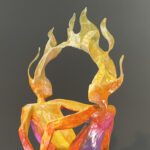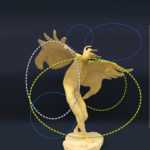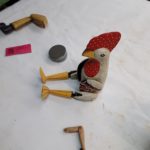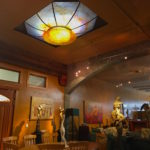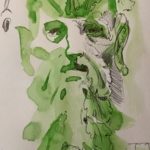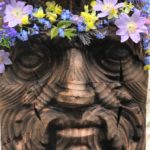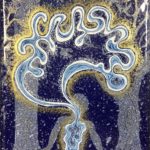Faced with a question, our natural instinct is to resolve it as quickly as possible. Our brains are wired to match patterns that solve the problem. In the tangible world, that’s a great approach. Red light means stop. Green light means go. Creative thinking is not required.In the creative realm, it’s different. Patterns that drive […]
Process
Space is the Place
Reflections on Meditation and Sculpture Process Recently, my meditation practice expanded into my clay studio. There was a spontaneous notion to stop all action, pause every agenda, and sit in the middle of the floor. It was almost surprising how easy it was to do in that fairly busy place. There are hundreds of ceramic […]
Spatial Relations: Seeing 3D Form in the Void
Humans have a natural ability to see and recognize things. You see something and your brain immediately matches the image to a pattern you’ve seen before. You recognize the object. It’s 3D form. Comprehension is complete. Congratulations. You’ve recognized the object and completely missed the space – the invisible element of the image. Space is […]
Art Play Day at Murphy Sculpture Studio
I’ve wanted to do this since Carole first asked me to announce it. I finally made the third iteration and was not disappointed. What a hoot. Here’s the idea. On certain Wednesdays, (to be announced to members) Carole Murphy opens her sculpture studio and her immense collection of oddities for members to use as they […]
Bronze Sculptor Shifts Gears to Explore Collaborative Opportunities
Many PNWS members know me as a bronze sculptor involved exclusively with narrative bronzes. But there is another side bubbling up that wants to be more aggressive about other creative forms. Before I went full-tilt into using the figure to tell stories and convey emotions I was producing abstract work in all sorts of mediums […]
Sculpture Process: The Green Man from Sketch to Finished Sculpture
As a gardener, I’ve been cultivating plants for 60 years. As a sculptor, I’ve been researching the Green Man in books, museums, and churches. A current project which employs the sculpture process combines these interests into designs for a bronze fountain featuring the Green Man. My drawings confirmed an idea I’ve had that sculpture comes […]
Wood Sculpture Techniques at the Portland Japanese Garden
My art tells stories, my collaborator is wood. In my current series, I recycle construction debris, coaxing these manufactured shapes into revealing their natural irregularities. I work with cross-sections of wood and pay special attention to the grain and texture. With certain wood sculpture techniques, the history of the tree becomes an integral part of […]
“I am Leading this from What I Need as a Sculptor.”
Patrick Gracewood interviews sculptor, Alisa Looney PG. I’m curious about artists who combine different disciplines. We share a love of drawing, dance, and sculpture. I’d like to talk about process. When we are focused on “Making ART” it is easy to ignore our body’s needs. How do you care for your spirit’s needs as a […]
